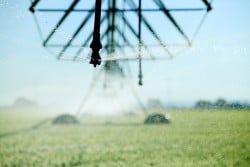
Water Issues
In today’s world the water issues we face are numerous and varied due to the impacts of climate change, aging infrastructure, a burgeoning population, the demands of agriculture to feed that population and industries to supply goods to it.
More people are taking ownership for the quality of the water in their own homes. Investing in a water treatment system is the added insurance you need to know your family is getting the best tasting and healthiest water possible. With the emphasis on drinking enough water at every age to maintain good health, it’s comforting to know you can control for some of the water issues facing society today.
Water and Private Water Supplies
Using a private water supply, like well water, can no longer be thought of as an endless supply of clean, safe water. In the United States alone, drought is impacting some 40% of the country to lesser or greater degrees. The lack of snowpack and rainfalls to replenish groundwater supplies and the growing agricultural withdrawals for crop irrigation are continuing to squeeze groundwater supplies.
 Animal farming is imprinting on water quality as fertilization practices introduce nitrates and bacteria into surface water like streams and rivers, which can get washed into wells during heavy rain events or even seep into the ground and infiltrate aquifers.
Animal farming is imprinting on water quality as fertilization practices introduce nitrates and bacteria into surface water like streams and rivers, which can get washed into wells during heavy rain events or even seep into the ground and infiltrate aquifers.
Water and Municipalities
Municipalities, both large and small, face numerous challenges in the quest to supply clean, safe water. In many large cities in Europe and North America, the pipes buried underground that deliver the water to homes are nearing the end of their useful life. Water main breaks are commonplace and exacerbated by weather extremes that put pressure on the integrity of these pipes and create more and more fractures. The costs to repair these are enormous and cities struggle with finding the required money. But even with proper financing, it is nearly impossible to physically dig up and repair or replace the vast number of pipes needing it in a timely fashion. The construction would be total mayhem. In the meantime, we wait and hope we are not impacted by a water service interruption or a serious water contamination event.
Water and Small Communities 
For small community water systems, the challenges can be somewhat different. Loss of customer base as people continue to move toward large urban centers also creates financial burden. The EPA continues to refine and expand the list of contaminants to be monitored and removed from public water supplies (PWS) placing more pressure on already constrained resources. In 2012, one quarter of all public water systems in the US reported significant violations, including health-based standards and monitoring and reporting. When you consider that there are over 114,000 PWS, over 36,000 had significant violations. Most were for failing to comply with the monitoring and reporting requirements. If these PWS are unable to keep up with the water quality testing they should be doing, how can they really be certain of the water leaving the facility?
Disinfection By-Products
Another issue, for public water supplies of all sizes, is the matter of disinfection by-products. Chlorine is absolutely necessary as a disinfection residual when water has to travel many miles before reaching our homes and offices. No one however, wants to be tasting chlorine in their water, nor risk the exposure to the by-products.